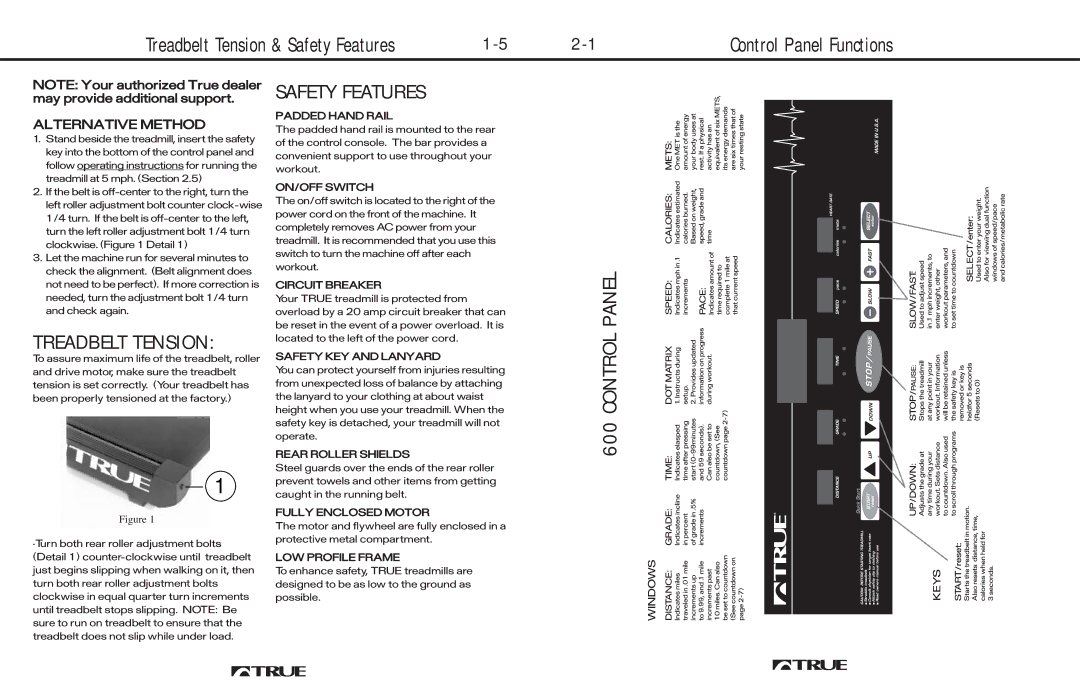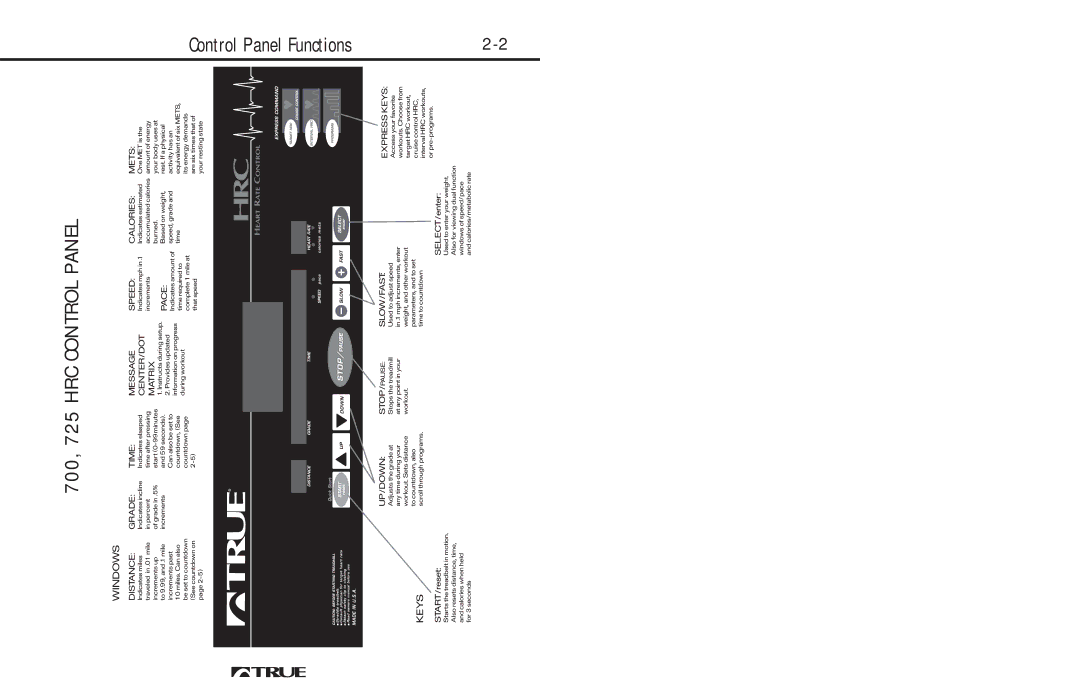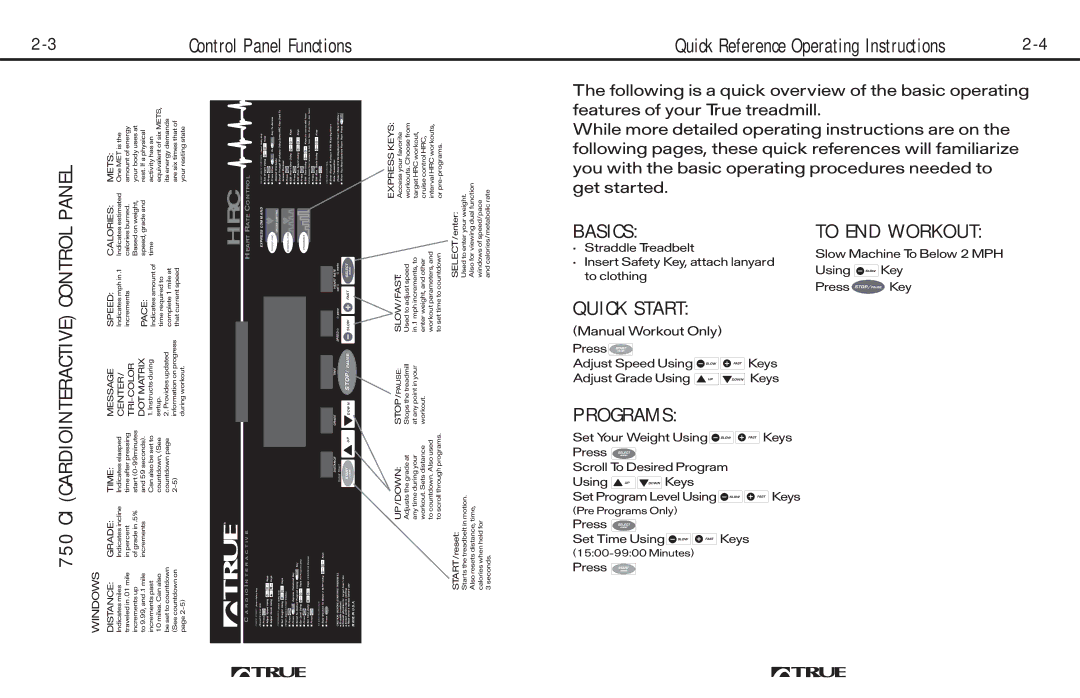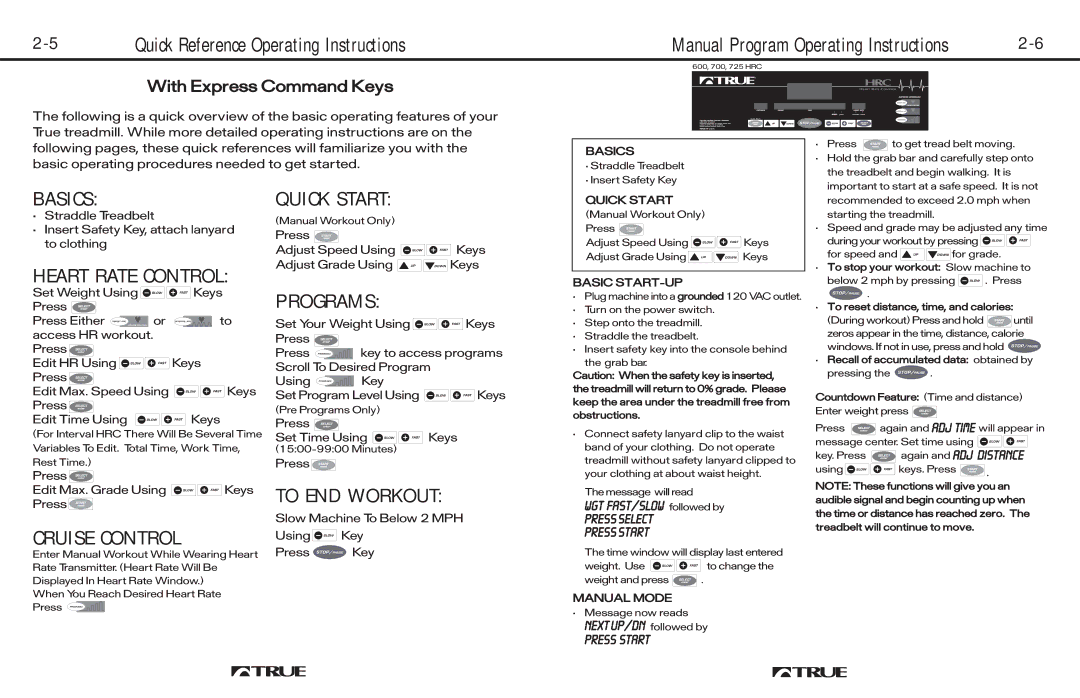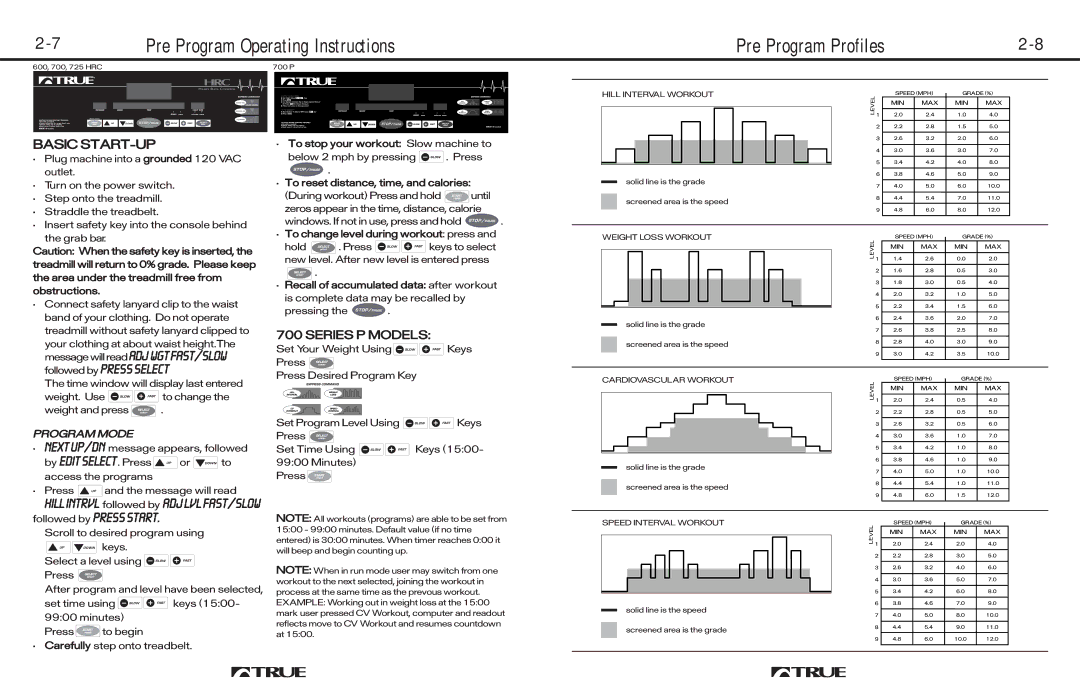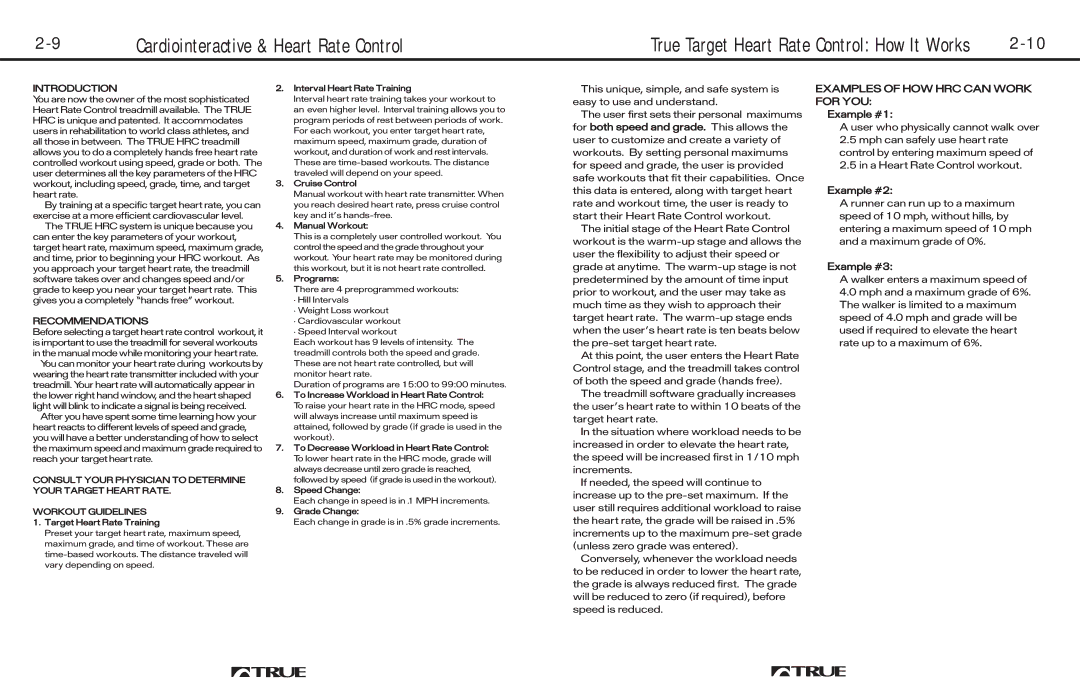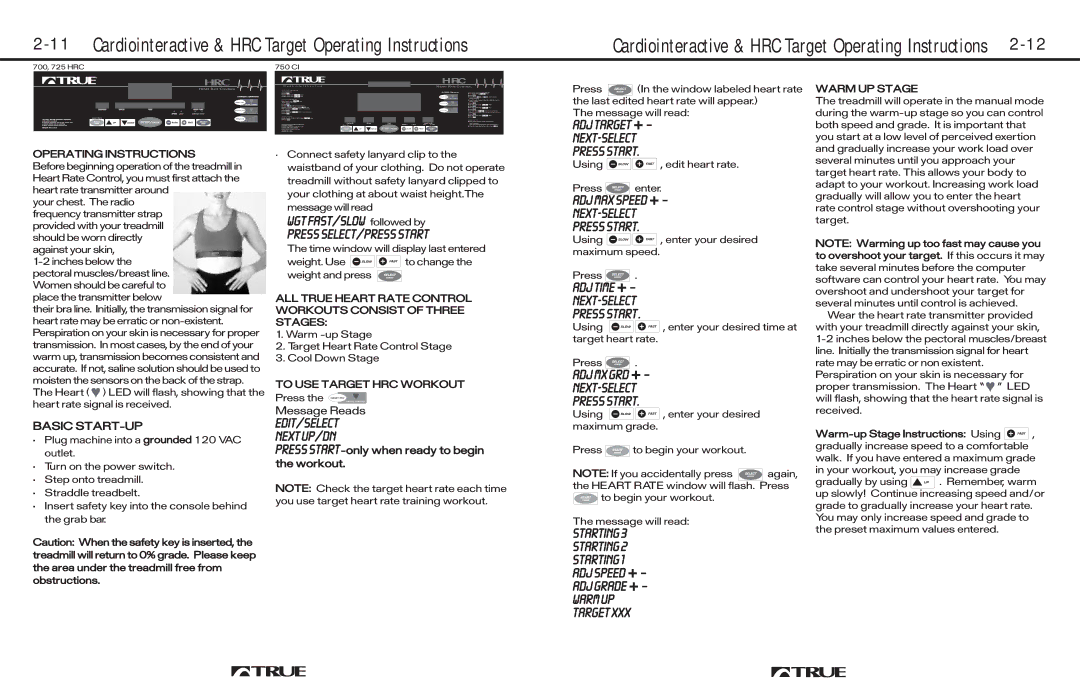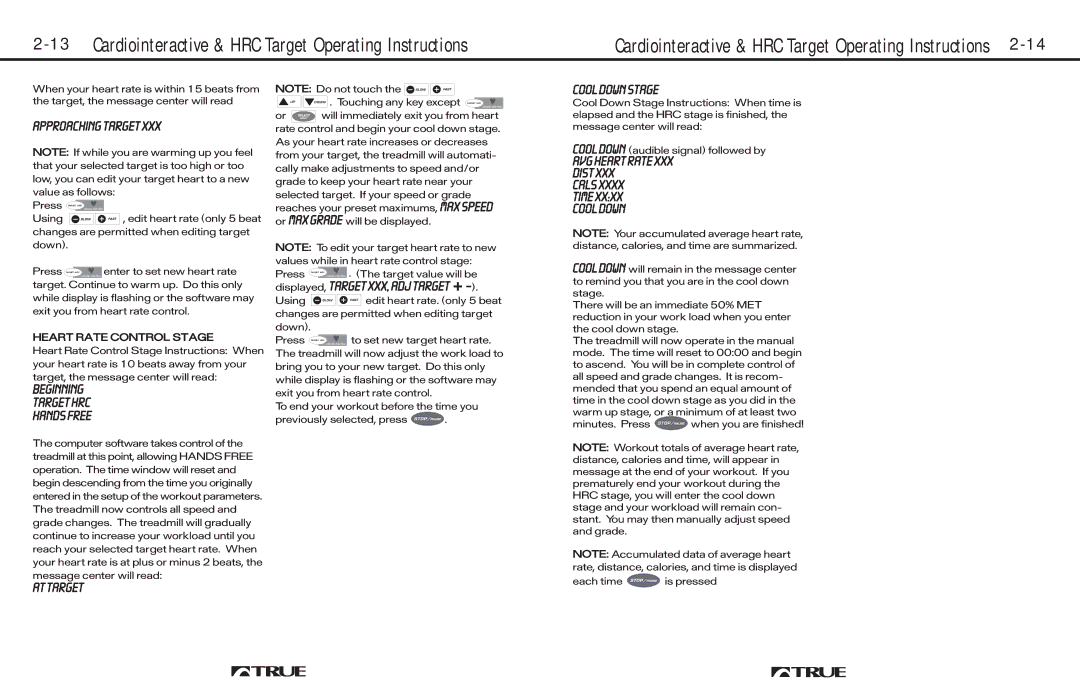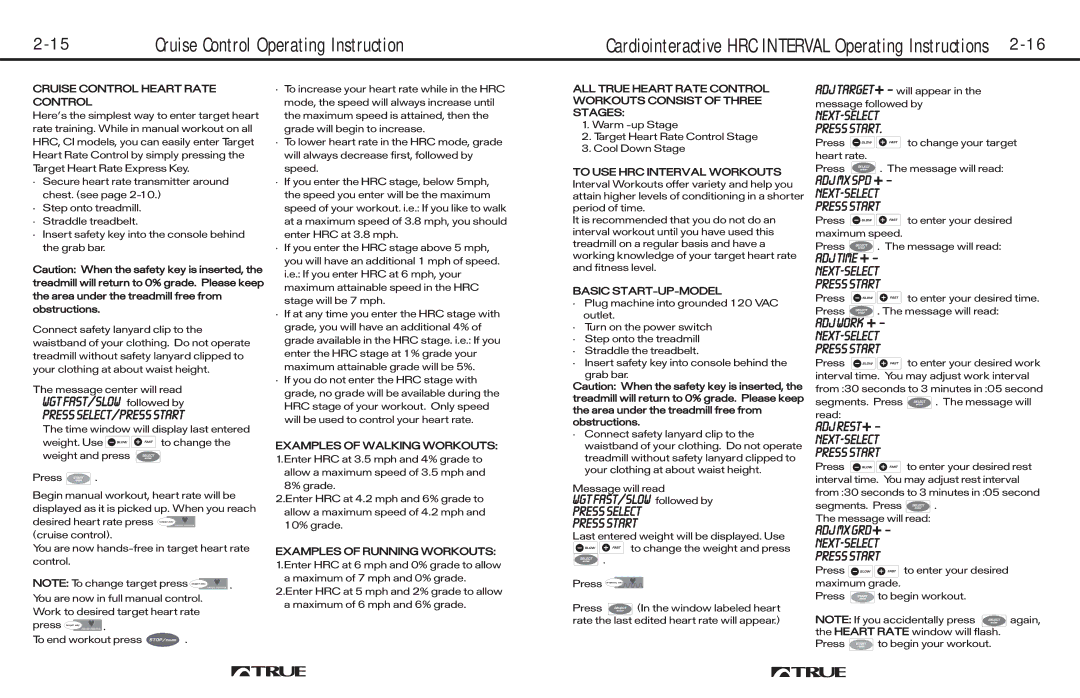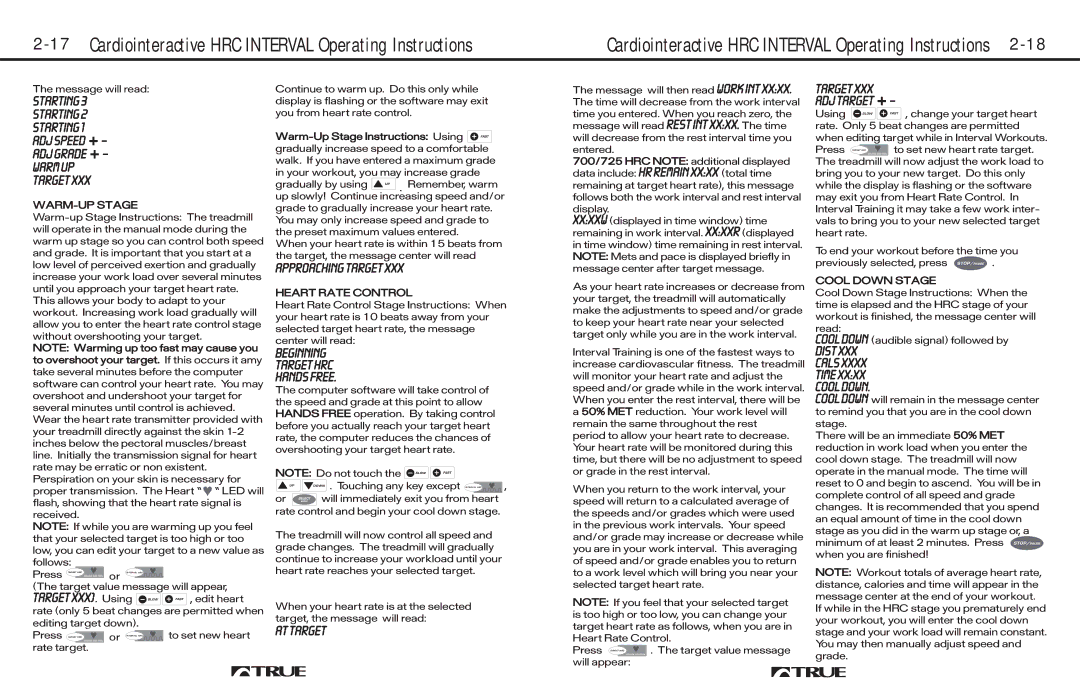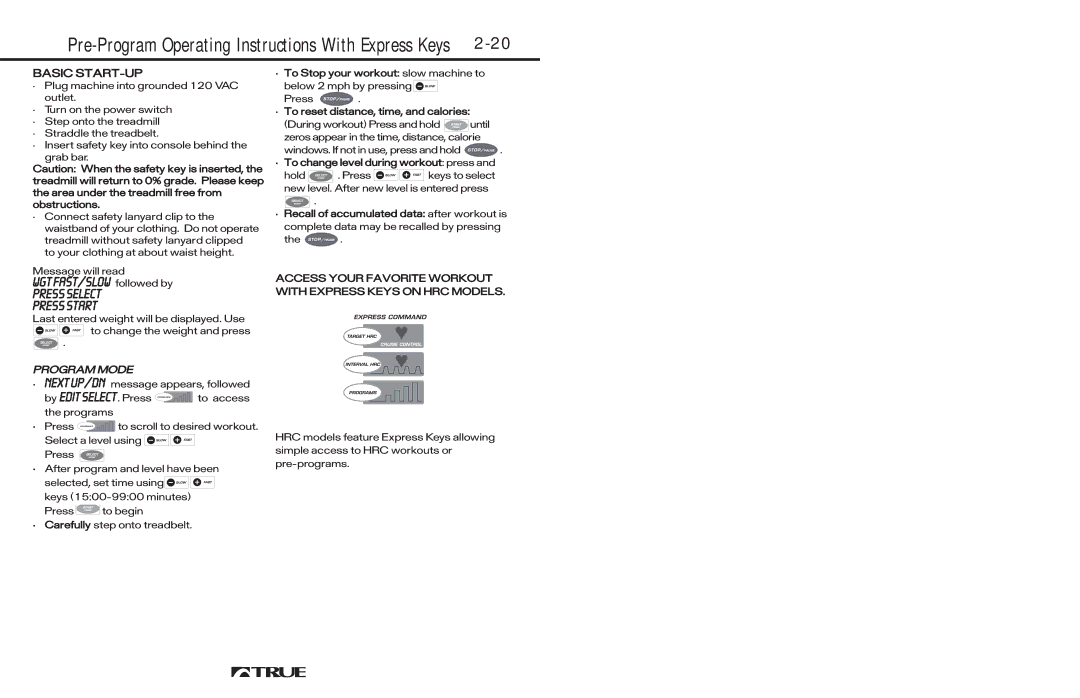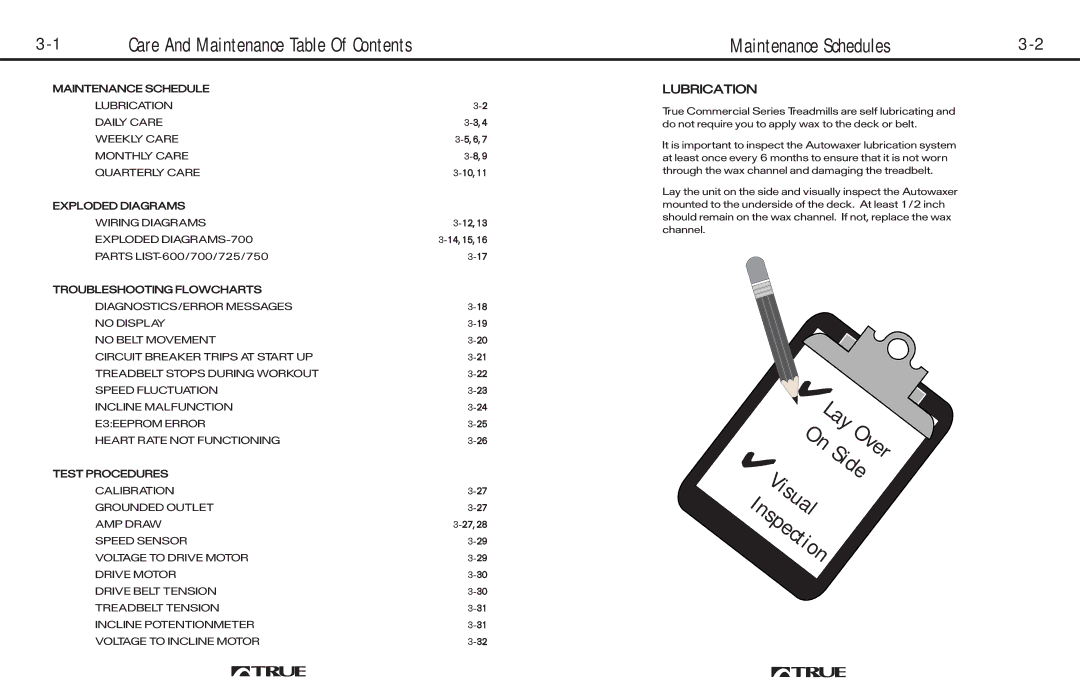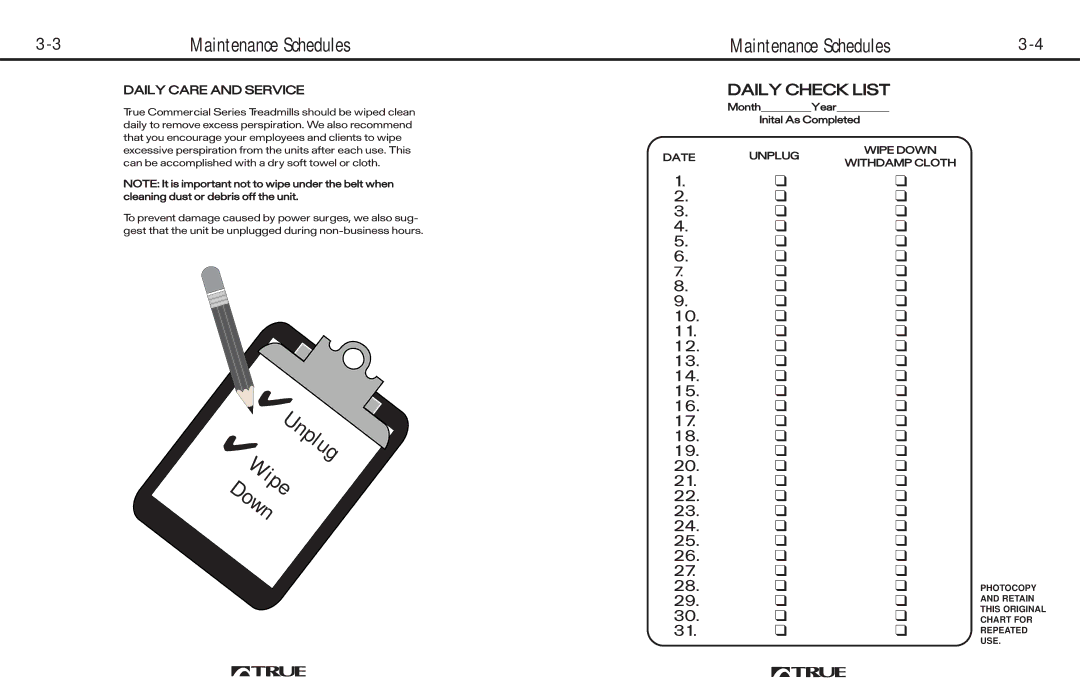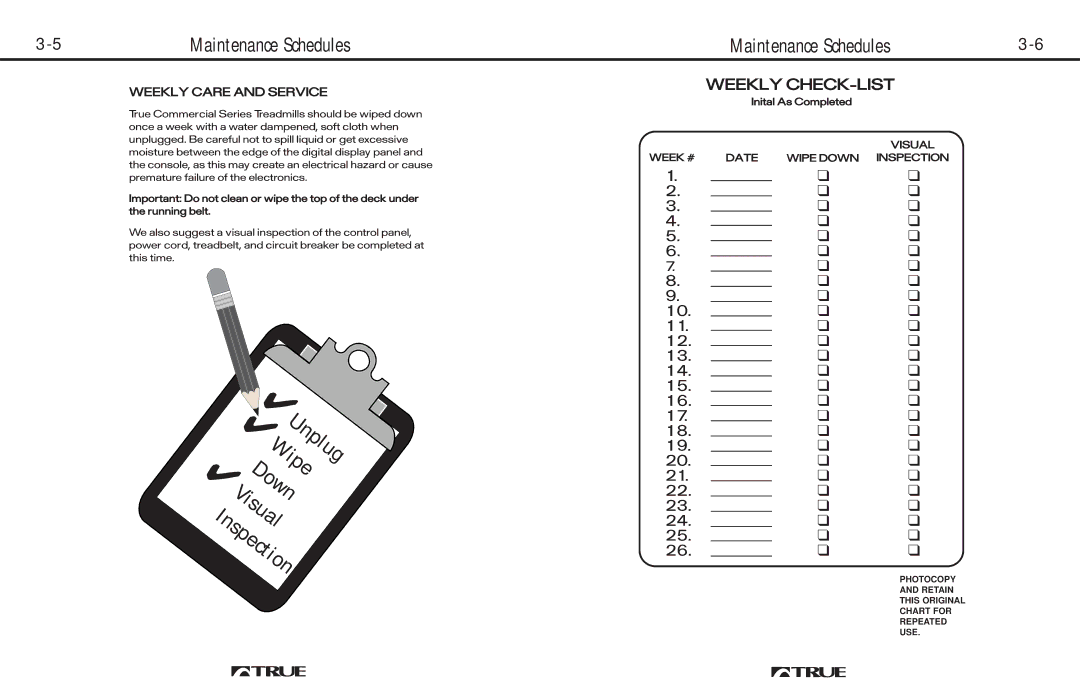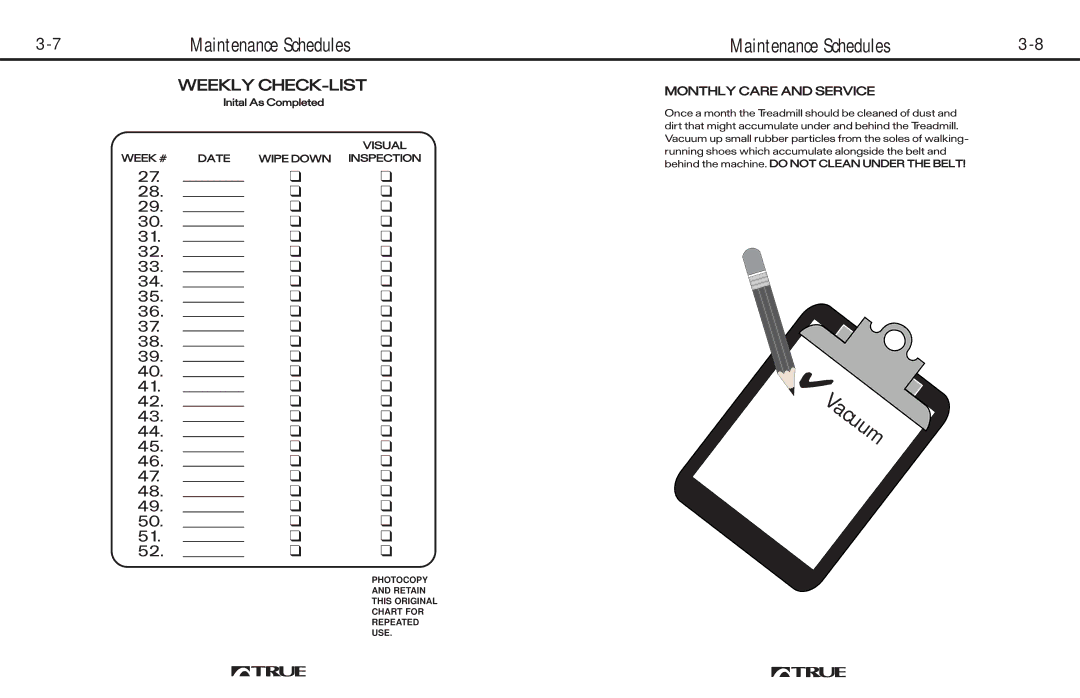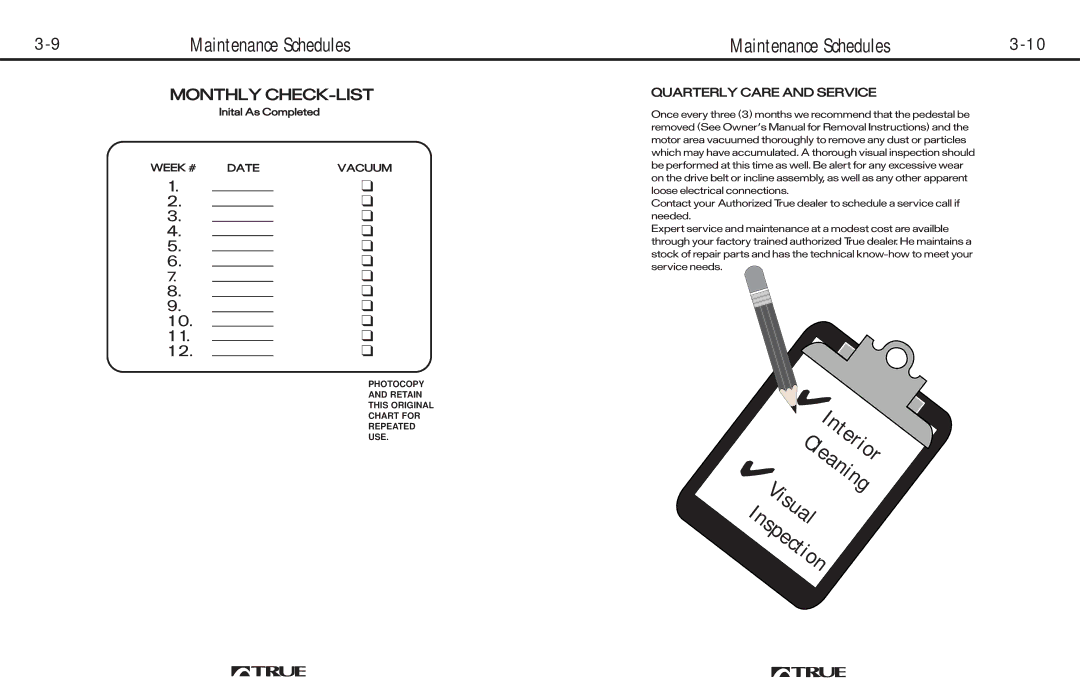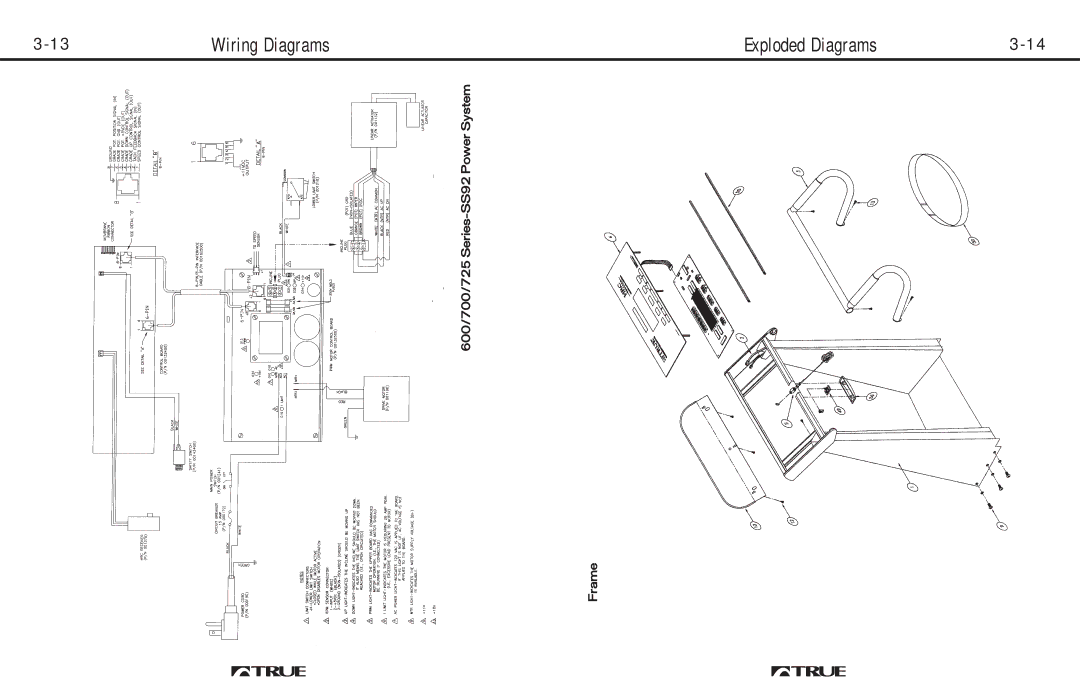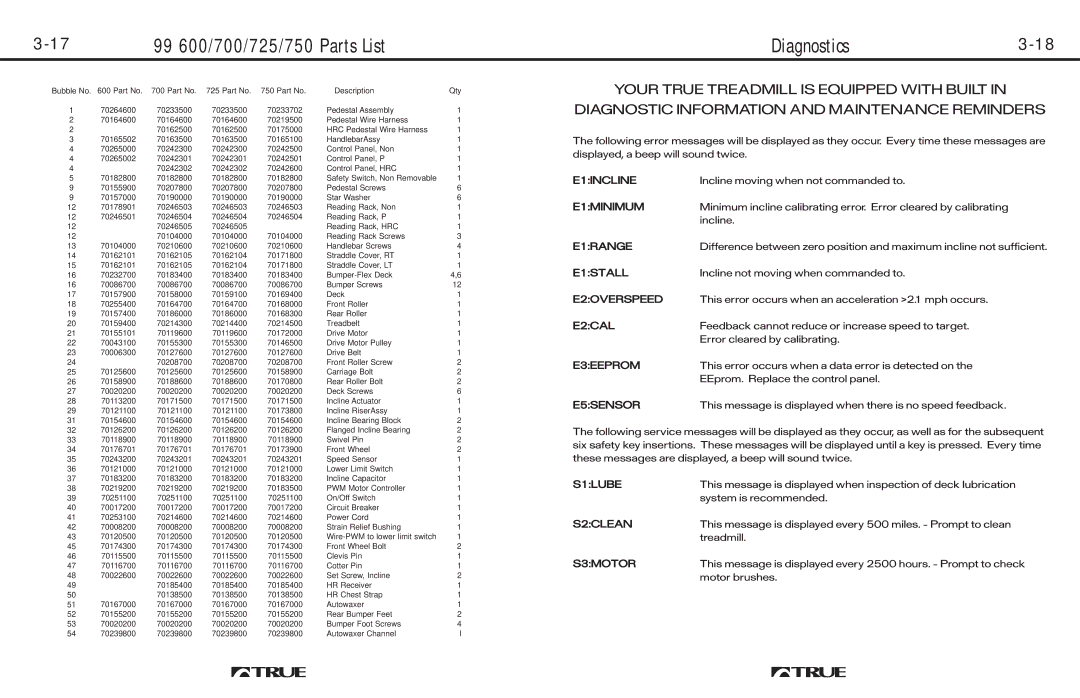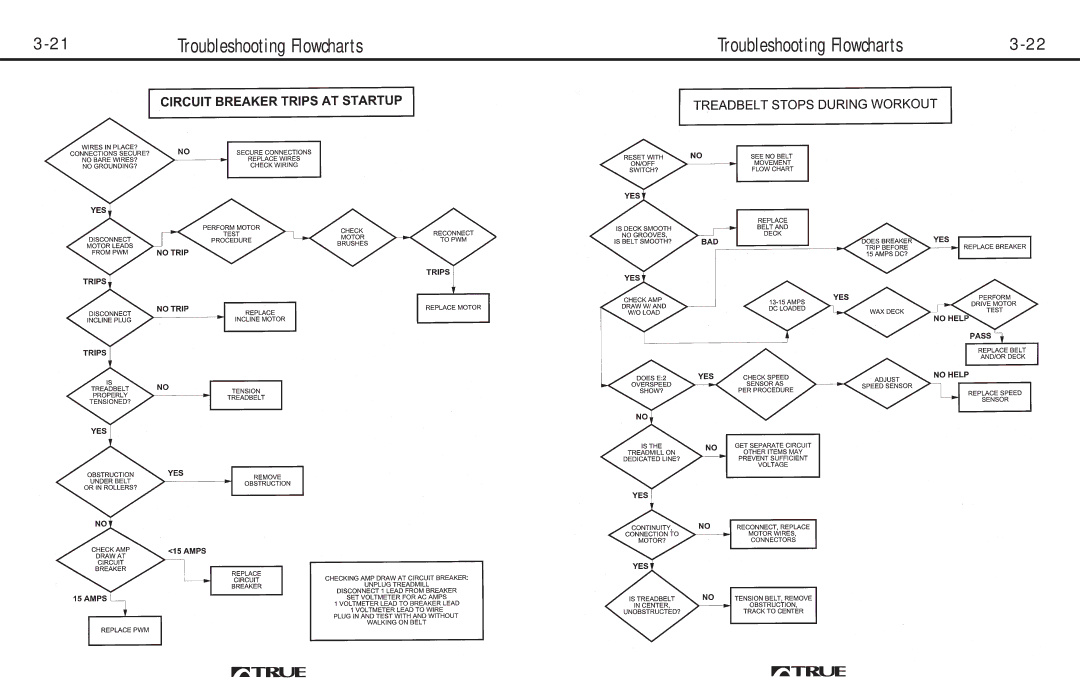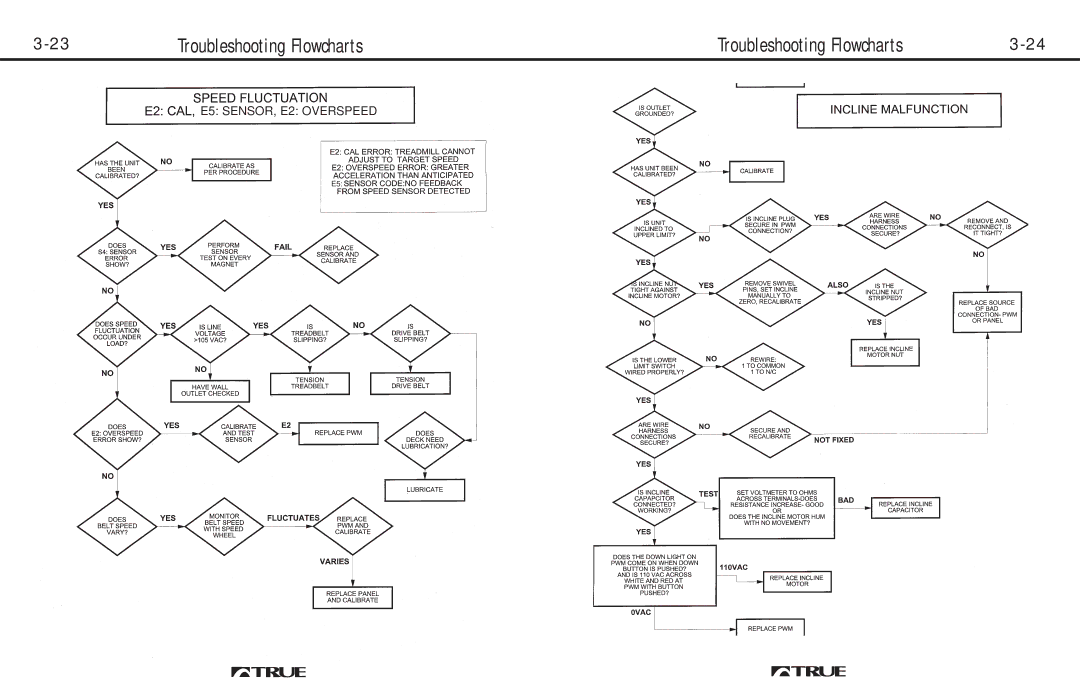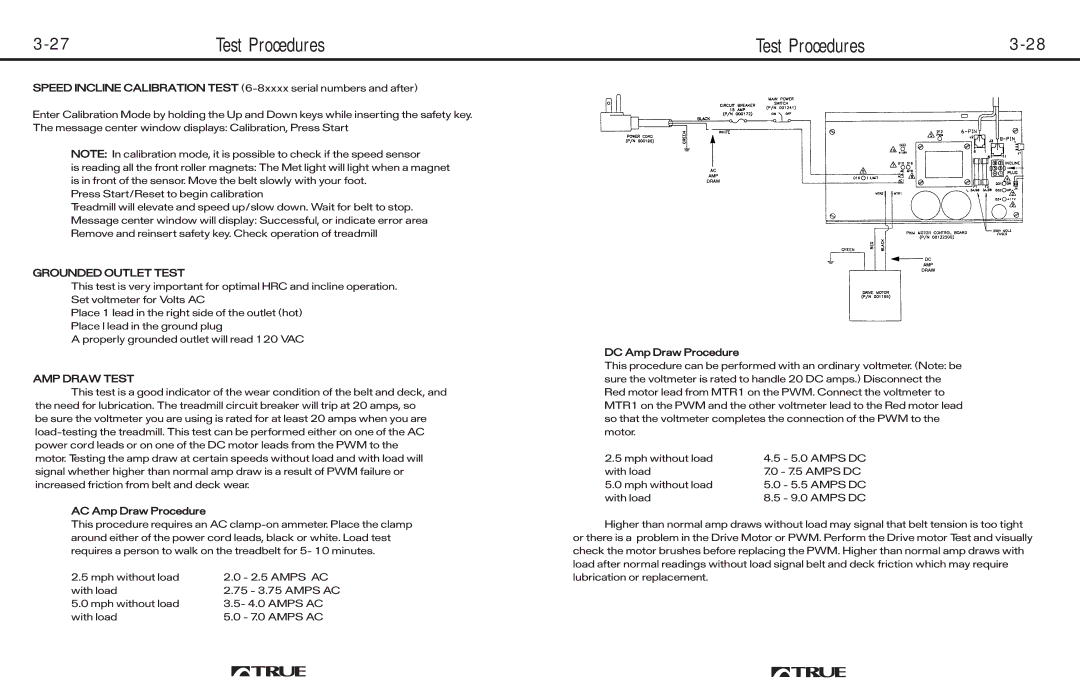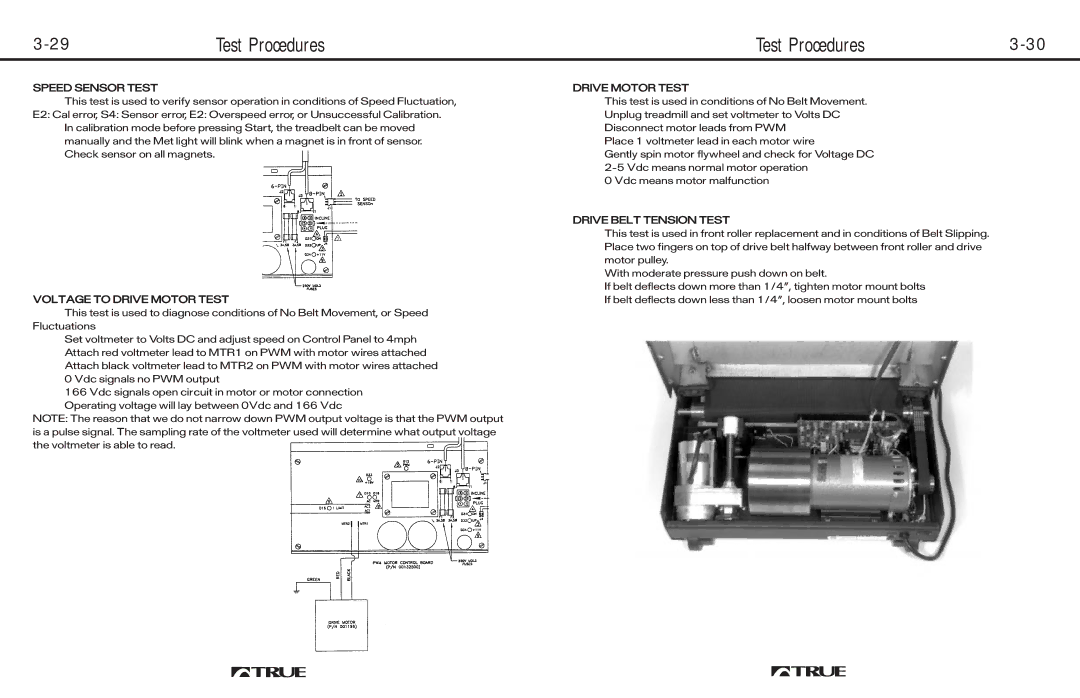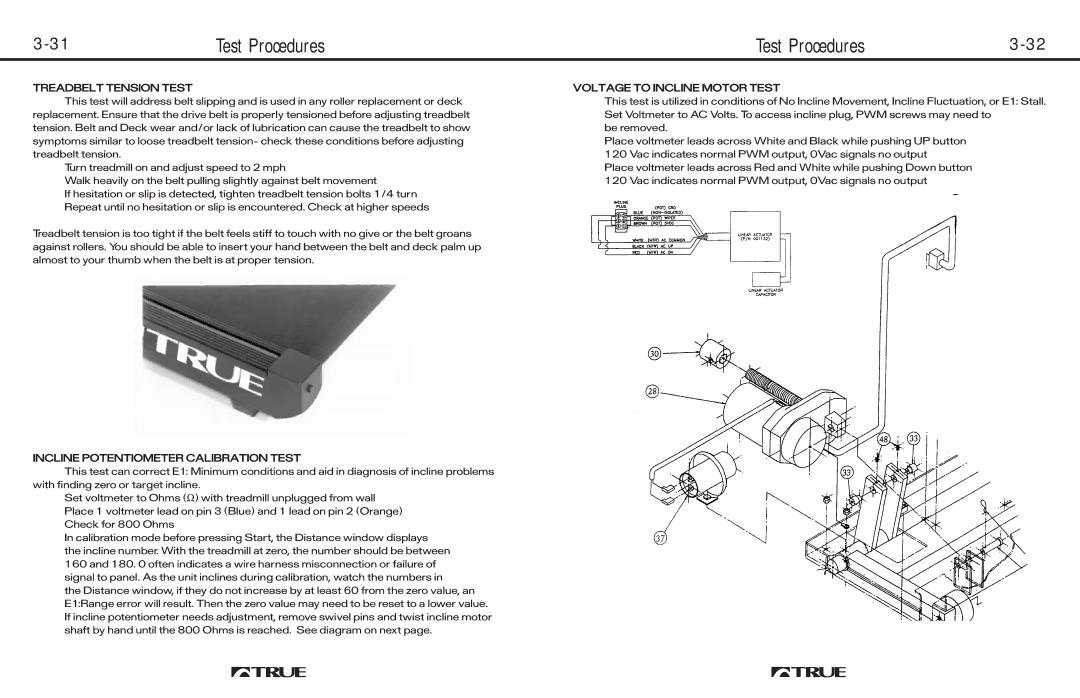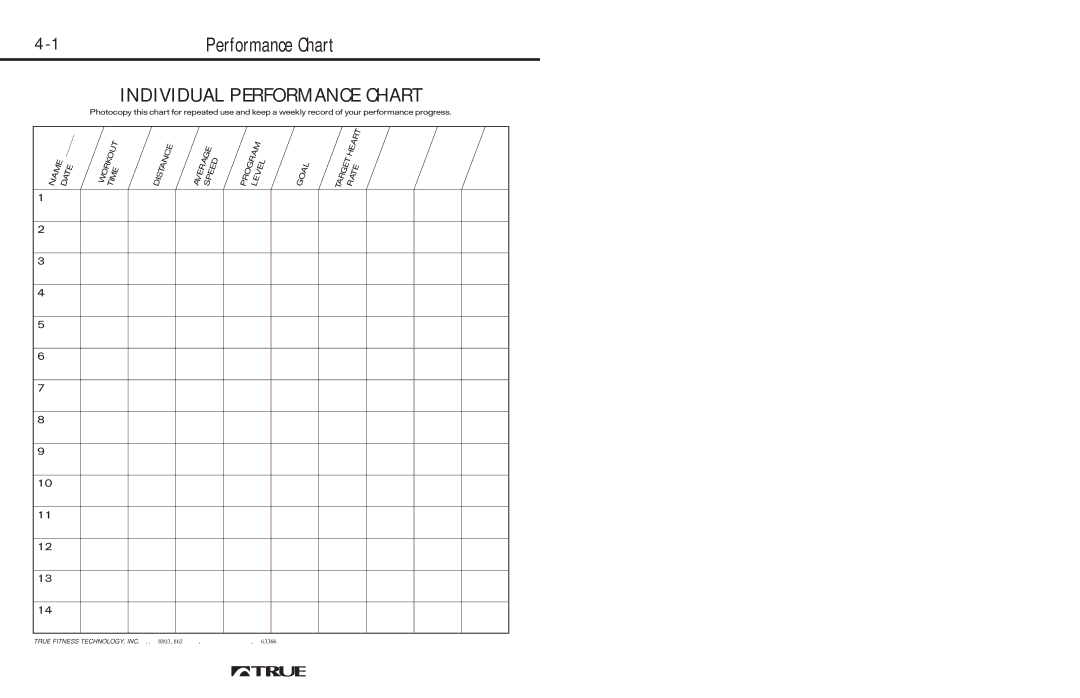
Target Heart Rate Chart | The F.I.T. Formula |
AGE |
WARNING!
Consult your physician to determine your target heart rate before using the heart rate control mode of this treadmill!
The above chart is to be used only as an average reference point and is in NO WAY a recommendation of your personal abilities!
Medications may affect your heart rate.
Consult your physician for specific advice before exercising.
Do not use this treadmill if you have an acute illness, cold or fever.
STOP EXERCISING IF:
-YOU FEEL FAINT OR DIZZY.
-YOU EXCEED YOUR MAXIMUM HEART RATE SET BY YOUR PHYSICIAN.
THE F.I.T. FORMULA
(Frequency, Intensity,Time)
YOUR FITNESS PROGRAM
You can get valuable fitness benefits from your TRUE Treadmill. Using the treadmill regularly may increase the ability of your heart and lungs to supply oxygen and nutrients to exercising muscles over an extended period of time. The treadmill will also help you develop added muscle endurance and balanced strength throughout your body.
DETERMINING YOUR NEEDS
Calculate your maximum heart rate as a first step in developing your fitness program. The formula to calculate average maximum heart rate for one minute is 220 beats per minute minus your age. To find your pulse, locate a vein on your neck or inside your wrist, then count beats for ten seconds, then multiply by six. (Refer to chart on page
ItÕs also important to know your target training zone or target heart rate. The American Heart Association (AHA) defines target heart rate as
In addition to monitoring your heart rate as you exercise, be certain of how quickly your heart rate recovers. If your heart rate is over 120 beats per minute five minutes after exercising, or is higher than normal the morning after exercising, your exertion may be too strenuous for your current level of fitness. Reducing the intensity of your workout
is recommended.
The
WARNING: Consult your doctor to establish the exercise intensity (target heart rate zone) appropriate for your age and condition before beginning any exercise program.
BEGINNING YOUR
EXERCISE PROGRAM
WORKOUT: Brisk and Rhythmic Exercise The workout trains and conditions your heart, lungs, and muscles to operate more efficiently. Increase exercise in response to your heart rate to train and strengthen your cardiovascular system. Concentrate on moving your arms and legs smoothly. Walk naturally and avoid jerking motions that can cause pulled muscles, sprained joints, and loss of balance.
COOL DOWN: Slow and Relaxed Exercise Cooling down relaxes your muscles and gradually lowers your heart rate. Slowly reduce your workload until your heart rate is below 60% of your maximum heart rate. The cool down should last at least five minutes, followed by somelightstretchingtoenhanceyour flexibility.
